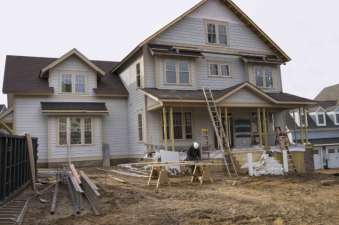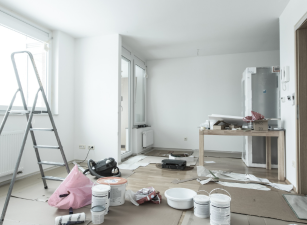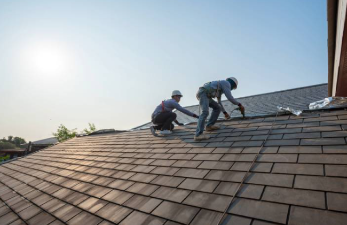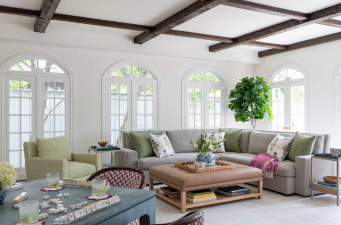Is a Full House Renovation Worth It?
In recent years, whole-home custom renovation has become one of the top choices for many families when renovating their homes. Its advantages, such as personalized design, efficient use of space, and improved quality of life, have attracted many consumers. So, is whole-home custom renovation truly cost-effective?
What is whole-home custom renovation?
Whole-home custom renovation is a renovation method that personalizes the design and construction based on the homeowner's needs and the specific structure of the house. It encompasses everything from overall style design and furniture arrangement to customized details such as cabinets, wardrobes, and bookcases. This renovation approach emphasizes the rational use of space, a unified style, and a personalized expression of individuality.

Advantages of Whole-Home Customization
- Personalized Design: Whole-home custom renovations can be designed to suit the homeowner's personal preferences and lifestyle. Whether it's a modern minimalist style or a classic European style, both can be fully reflected in the design. This not only meets the homeowner's individual needs but also reflects their taste and quality of life to a certain extent.
- Maximized Space Utilization: Compared to traditional pre-made furniture, whole-home custom renovations can be designed based on the actual structure of the house. Whether it's an odd-shaped space, a narrow corner, or an irregular room, custom design can achieve optimal utilization. This is especially important for smaller homes, significantly increasing storage space and improving convenience.
- Flexible Material Selection: With whole-home customization, homeowners can choose materials of varying grades based on their budget. Whether it's eco-friendly panels or high-end solid wood, the choice is tailored to their budget and environmental needs.
- Consistent Style: Whole-home customization ensures a consistent home style, avoiding visual clashes caused by inconsistent furniture styles. Whether it's materials, colors, or design, whole-home customization ensures overall harmony.
- Comprehensive Service: Whole-home customization is typically completed by professional design and construction teams, who can provide one-stop services from design to installation, reducing the owner's time and effort.
Disadvantages of Whole-Home Customization
- High Cost: The initial cost of whole-home customization is high, a key consideration for many consumers. Due to the personalized design and construction involved, material and labor costs are relatively high. For families on a limited budget, this may require careful consideration.
- Long Timeframe: Whole-home customization involves multiple steps, including design, material selection, production, and installation, and typically requires a long timeframe. Homeowners need to be patient and wait for the entire process to complete.
- High Dependence on Design: Whole-home customization requires a high level of professional expertise from the designer. If the designer lacks experience or understanding, the final result may be unsatisfactory. Therefore, choosing a reputable design firm is crucial.
- Difficulty in Secondary Modifications: Because whole-home customization is tailored to the home's structure and the owner's needs, later modifications are difficult and costly. Therefore, it's important to consider potential future changes in life from the early stages of the design process.

Comparison between Whole-Home Customization and Traditional Renovation
- Style: Traditional renovations are typically based on pre-owned furniture, while whole-home customization is custom-designed based on the owner's needs, allowing for a more personalized style.
- Cost: Traditional renovations use mass-produced, pre-made furniture, resulting in relatively transparent pricing and affordability. Whole-home customization, on the other hand, involves personalized design and high-quality materials, leading to higher prices.
- Construction Time: Traditional renovations typically have a shorter construction time because most furniture can be purchased directly. Whole-home customization, on the other hand, requires multiple steps, including design, production, and installation, and takes a long time.
- Space Utilization: Whole-home customization significantly outperforms traditional renovations in terms of space utilization. It can be designed based on the specific structure of the home, making full use of every inch.
Is whole-home customization cost-effective?
Whether whole-home customization is cost-effective depends largely on personal values and actual needs. If you pursue personalized design, overall style harmony, and maximum space utilization, then whole-home customization is undoubtedly an option worth considering. Although the initial cost is higher, in the long run, it can improve your quality of life and increase the value of your home.
However, if your budget is limited and you don't have particularly high requirements for personalization and space utilization, traditional renovations or partial customization may be more suitable. The ultimate choice should be based on your financial situation and living needs.
Whole-home customization has become a major trend in modern home improvement due to its many advantages. While it does have certain disadvantages and limitations, these can be effectively avoided through proper planning and selection. Regardless of the renovation method you choose, the key lies in clearly defining your needs and managing your budget appropriately.


